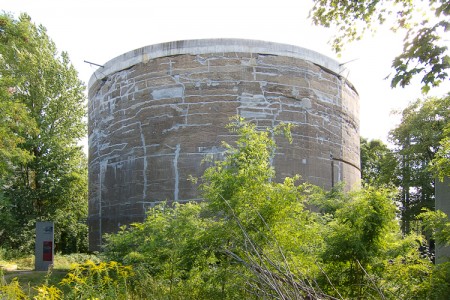
Hidden behind trees the Schwerbelastungs körper (Heavy Load Bearing Body) does not immediately draw your attention. There is a small chance you have seen the 12650 ton heavy concrete body while travelling by train between Yorckstrasse and Südkreuz. However, more than 70 years ago this was only a small start of megalomaniacal building project.
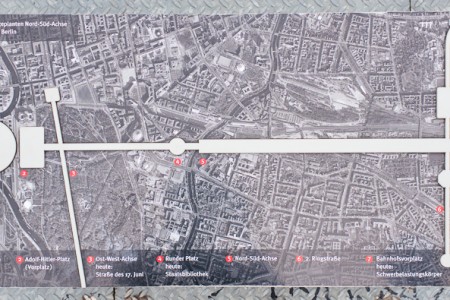
Germania
One of Hitler’s many bizarre ideas was to transform Berlin into “World capital Germania”. It is 1937 when Hitler ordered his architect Albert Speer to redesign the center of Berlin to make it more representative for its new status.
Speer designed a 7km long North-South axis, starting with a station at the north side in Wedding, going southward via a Great Hall (measuring 300m in all dimensions, planned between the current main station and the Reichstag), finally ending at a huge station south of the center, which was planned at the current Südkreuz station. Along the 120 meter broad boulevard important government buildings were planned and all major companies from the Third Reich should get their main offices here. To honour all German soldiers who fought and died during the 1st and 2nd World war a huge Triumphal Arch was designed near the southern station, which should be 120 meter wide, 110 meter deep, and 100 meter high. As we’re talking about the World capital here this was of course many times larger than the Arc de Triomphe in Paris.
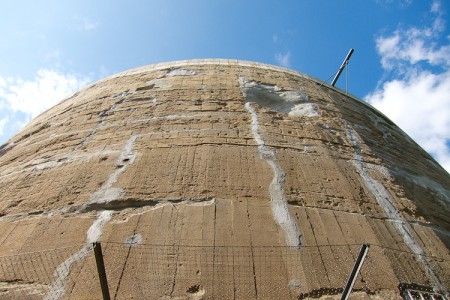
Schwerbelastungskörper
There was only one problem: the weak sandy soil of Berlin. It was not clear if such large and heavy buildings would sink into the ground or not. In order to test the load bearing capacity of the ground a 12650 ton heavy concrete body was developed at the site of the Triumphal Arch: the Schwerbelastungskörper. With a diameter of 20 meter, a height of 12 meter and a depth of 18 meter into the ground, it exerts a pressure of 126 ton per square meter, which was more than the Great Hall or Triumphal Arch. When the body sank no more than 2cm into the ground, the soil would pass the test. It was build in 1941, most probably by prisoners of war.
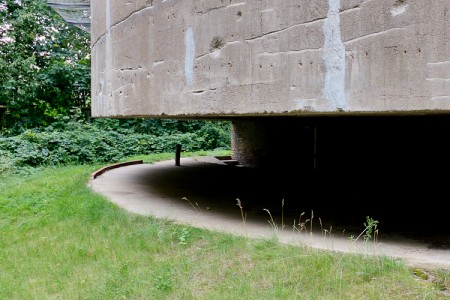
In order to have a nice view on the Great Hall from the entire north-south axis, it was planned that the Triumphal Arch had to be placed 12 meter higher than the existing ground level. This meant roughly that many houses in the surrounding area had to be torn down, the inhabitants of these houses had to move into the houses formerly inhabited by Jewish people who were deported, the total area had to be elevated by 12 meter and that the entire Schwerbelastungskörper would disappear into the ground as well. The whole project had to be finished in 1954 on Hitler’s 65th birthday.
Because of the end of the war the plans for Germania have never been put into practice. Many years after the war was over it was not possible to remove the heavy body, as houses were to near to have it blown up. Apart from being used for some construction test measurements, it has been standing around for more than 70 years being useless.
Today the Schwerbelastungskörper has a monumental status, you can visit it and try to imagine the outrageous design of Germania. And from the 12m high platform next to the body you have a wonderful view over Berlin. Highly recommended!
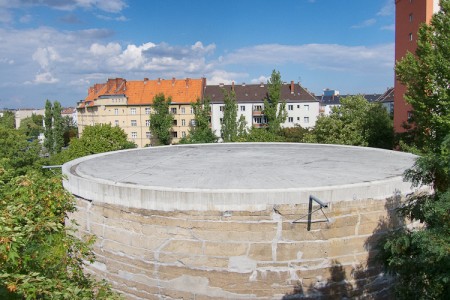
More information
www.schwerbelastungskoerper.de
General-Pape-Strasse/Loewenhardtdamm
Bus 104 Kolonnenstrasse, S1 Julius-Leber-Brücke
Open April-October Tue Wed 14-18 Thur 10-18 Sun 13-18
Free entrance
Guided tours by the Berliner Unterwelten e.V. every Sunday at 12, 6 Euro (recommended)
www.berliner-unterwelten.de